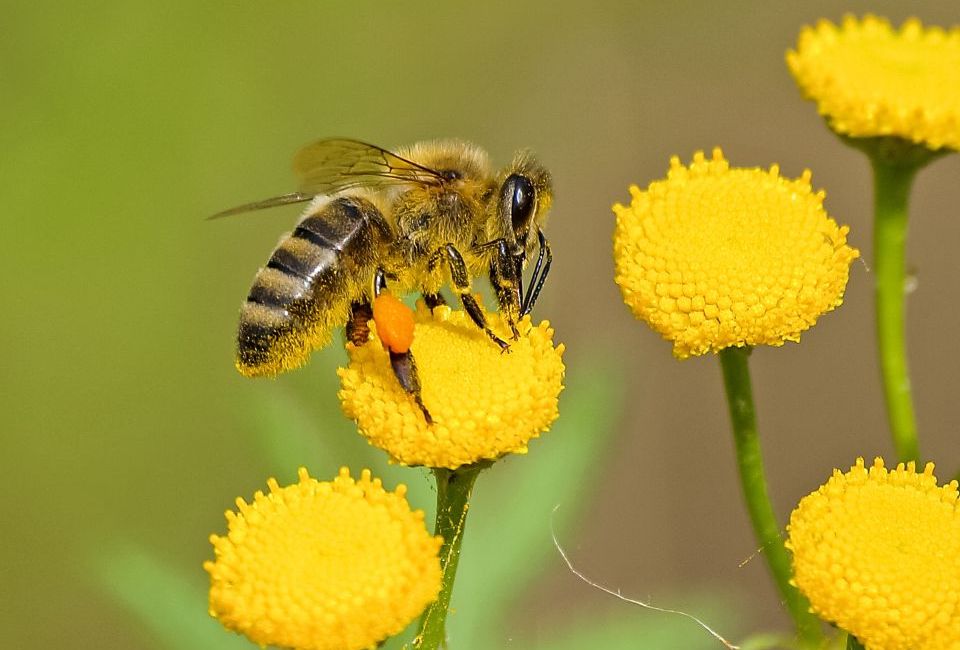
A study warns of the need to return to indigenous and local practices to conserve pollinators
We need to recover and apply the strategies of various local communities and indigenous peoples around the world to conserve and protect pollinators, such as bees, butterflies, moths, some bird species, and bats. That is the warning given by the study "Biocultural approaches to pollinator conservation", which has just been published in the journal Nature Sustainability, and is co-authored by Elisa Oteros-Rozas, a Juan de la Cierva researcher in the Chair in Agroecology and Food Systems at the UVic-UCC. The study was co-authored with an extensive group of university researchers from Australia, Colombia, Mexico, Indonesia, the United States, Brazil, Ghana, Pakistan, Great Britain, Argentina, Kenya, New Zealand, Germany and France.
With this plural perspective, and based on a biocultural approach, the study highlights numerous areas of indigenous and local knowledge and practices related to pollinators and landscape management. More specifically, it identifies seven practices and areas of knowledge used by those communities that encourage pollination: constructing infrastructure to house hives in tree trunks, excrement or mud; mental maps and knowledge of animal behaviour; relationships between people and pollinators based on reciprocity, care and respect; taboos and traditions that protect habitats, such as prohibitions on felling trees, nests and hives; careful use of the resources that pollinators use, such as crop rotation; using biotemporal indicators to manage these animals and their resources; and management of fire to increase the resources they need, such as flowers. Some specific examples of good practices include coffee plantations in Colombia, the Osun Sacred Grove forests protected by the Yoruba people in Nigeria, and the agave landscapes of Mexico, which have been producing beverages and fibres for around 2,000 years.
The study also shows how all these strategies play an essential role in diversified food production, and more specifically, in preserving the existence and role of pollinators. "There is a very close link between biological diversity and cultural diversity and this means we must adopt scientific, technical, local and indigenous knowledge to preserve that biodiversity," explains Oteros-Rozas. The researcher illustrates this link with the "relationship between the presence of pollinators and numerous ecological functions that are crucially important for the correct functioning of ecosystems and for human well-being."
The study follows a previous report published in 2016, by a team of scientists from around the world including the authors of this article, which warned about the critical situation of pollinators at a global level, and made a number of recommendations for their conservation for governments and environmental authorities. This report was produced by the Intergovernmental Science-Policy Platform on Biodiversity and Ecosystem Services (IPBES) of the United Nations Organization (UNO). The diversity of pollinators at the local level is being lost, according to Oteros-Rozas, mainly as a result of the increase in industrial agriculture: "it uses large quantities of pesticides, and tends to involve the production of a limited number of crops on large plots of land." According to the researcher, "the areas of wild vegetation where animals that transport pollen can reproduce and find food are shrinking."
In their article published in Nature Sustainability, the researchers say that the incorporation of local and indigenous knowledge in decision-making at various levels will "guarantee the food sovereignty of peoples, reduce dependence on imports and ensure communities' access to varied and healthy diets." They also believe that it is essential to restore and enhance agroecological management systems that incorporate biocultural diversity, and have doubts about the current model of agricultural production, which has destroyed 80% of the global biomass of insects in the last 30 years, as shown in another recent study published in the same journal.